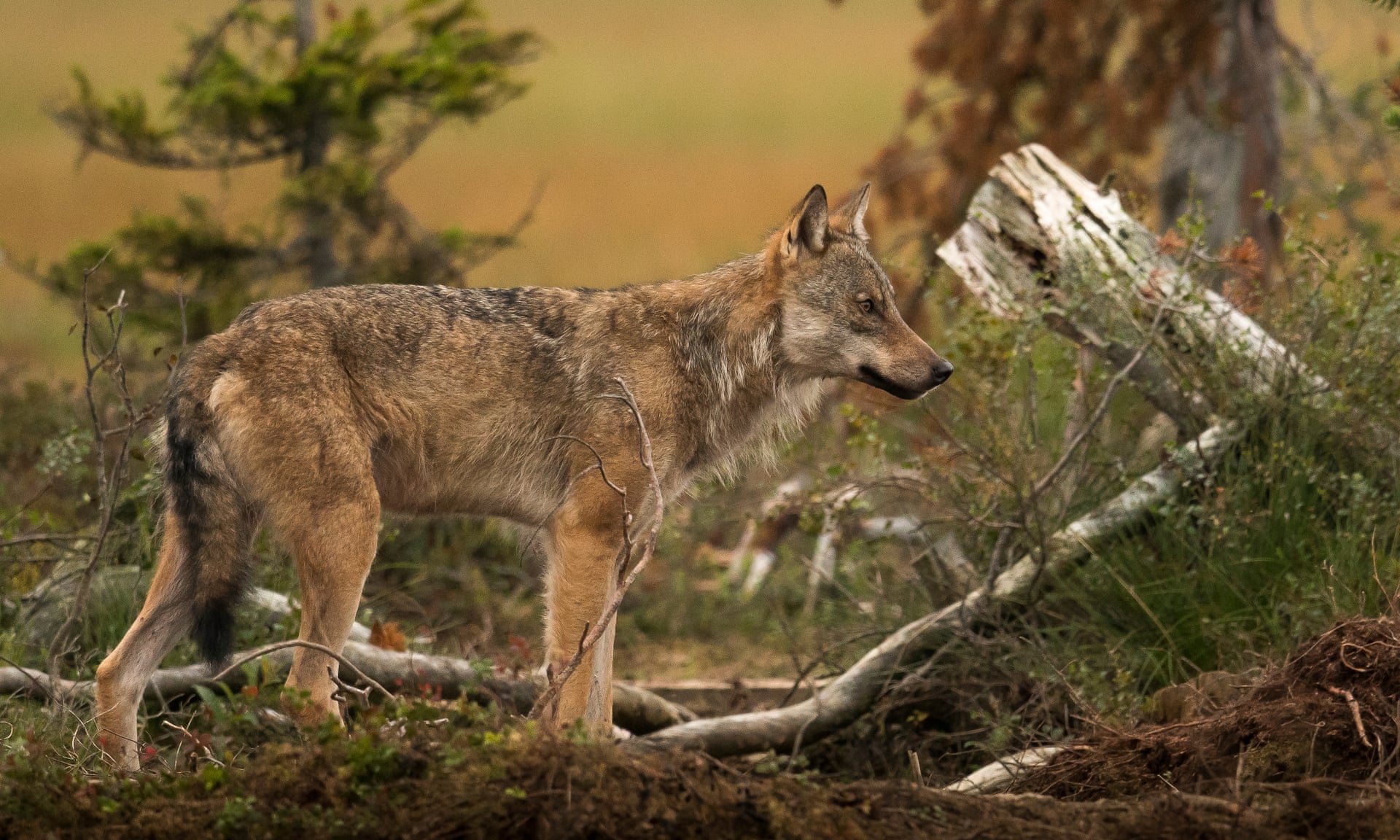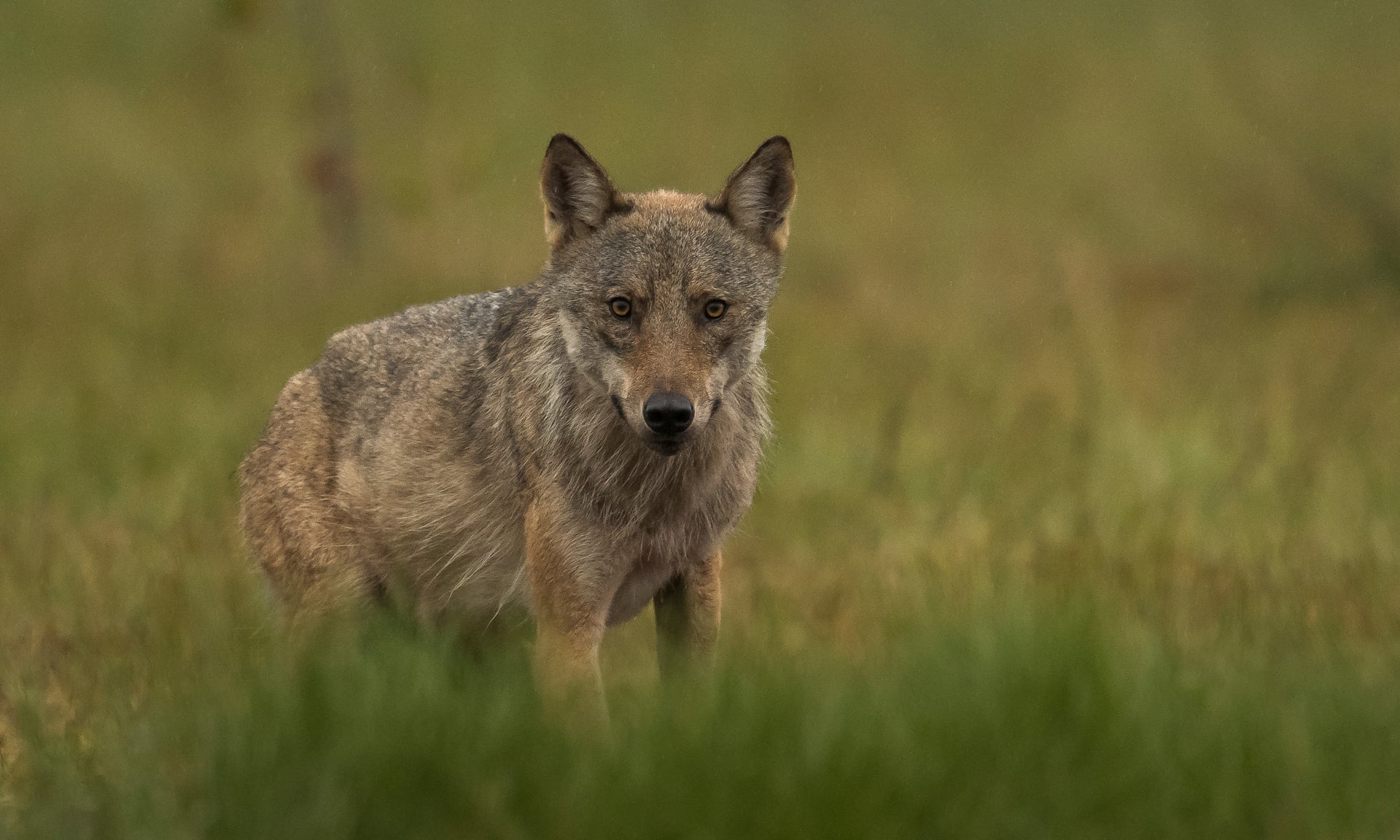Conservation groups worldwide were astonished to hear of the recent, unprecedented decision to destroy 70% of the Norway’s tiny and endangered population of 68 wolves, the biggest cull for almost a century.
But not everyone in Norway is behind the plan. The wildlife protection group Predator Alliance Norway, for example, has campaign posters that talk of wolves as essential for nature, and a tourist attraction for Norway.
Nothing unusual about that, given it’s a wildlife group, except that the group is based in Trysil, the heartland of the territory where most of the wolf culling announced by Norwegian authorities last week will take place.
Predator Alliance Norway is an anomaly in this area, a land inhabited by the most fervent advocates of culling – many of them farmers and hunters. Here, you pass cars with large stickers pronouncing “Real Men Shoot Wolves” to show support for six local poachers who were imprisoned for illegal hunting last year.
Lars-Erik Lie, a 46-year-old mental health worker who founded the group in 2010, told the Guardian: “I got so upset and saddened by the locals’ thirst for wolf blood, and wanted to show that not all villagers are in favour of wiping out this beautiful animal.
“Many locals think there should be room for both predators and livestock, but they have kept their mouths shut out of fear for repercussions.” Lie has himself been the target of threats.
Culling could undermine the viability of the entire Norwegian wolf population, say conservationists. Photograph: Roger Strandli Berghagen
At the heart of the matter is the conflict between sheep farmers and conservationists. Norway is a large sheep farming nation, unique in letting most of its 2 million sheep roam free all summer without herding, fencing and with little supervision.
As a result, 120,000 sheep are lost each year, and 20,000 of these deaths are attributed to predators, judging by state compensation payouts, which are based on documentation and assessment by the authorities. Beyond that, 900 cadavers found annually are confirmed to have been killed by predators. The wolf accounts for 8% of kills.
Wolves, bears, lynx, wolverines and golden eagles are Norway’s native top predators.
In 1846, the authorities issued bounties to hunt them down, resulting in all species being virtually extinct by the mid-20th century, The wolf was given protected status in 1973, a watershed in wildlife management for the acknowledgement of its part in Norwegian fauna and in need of protection. The first wolf returned in 1980, though the first breeding entirely on Norwegian soil did not take place until 1997.
In the meantime, a new breed of sheep had invaded the land. “The breed of sheep vastly favoured by Norwegian farmers is unsuited to roam around the rugged terrain of the country,” said Silje Ask Lundberg, from Friends of the Earth Norway.
The sheep is favoured for its size and large proportion of meat, but is a bad climber and has poor herding and flight instincts, unlike the old short-tail land race, considered the original Norwegian sheep race, prevalent on the west coast, where ironically there are no wolves.
Just across the mountain from Lie’s house in Trysil, is the territory of the Slettåsen pack, which has been marked out for a complete cull even though the wolves live within a designated wolf zone.
The framework for predator management has been set by parliament, with local predator management boards setting hunting and culling quotas when population targets have been achieved.
“The lack of a scientific and professional approach is obvious,” said Lie. In January his organisation filed a complaint that the board votes in representatives with vested interests, such as farmers, whereas green party members have been excluded.
Lars-Erik Lie of Predator Alliance Norway. Photograph: Arve Herman Tangen
At his office in Oslo, Sverre Lundemo of WWF Norway is also puzzled. “It seems strange that we should punish the wolf for following its natural instincts, particularly within specially designated zones where the wolf supposedly has priority over livestock,” he says.
“The Slettåsen pack is very stable and of genetic importance. Scandinavian wolves are subject to inbreeding and poaching, and this makes the small population more vulnerable to random events. Culling these individuals can undermine the viability of the entire Norwegian wolf population.”
According to Lundemo, the decision for culling appears to be based on politics as much as on science. The WWF have examined the case document that formed the base of the decision. “This a questionable decision on many levels. The case documents don’t substantiate why these three particular territories were singled out for culling,” said Lundemo.
Despite the population within the wolf zone having almost doubled since last year, attacks on livestock have almost halved. “Most of the injuries are inflicted by roaming young wolves from Swedish packs,” said Lundemo.
Sweden has stricter regulations for sheep farmers, refusing to compensate farmers who don’t protect livestock properly. As a member of the EU, Sweden had a planned licenced cull of 10 % of their wolf population of 400 in 2014 reduced following pressure.
Friends of the Earth advocate more suitable breeds of sheep, or cattle, and better fences and herding. WWF is exploring the option to challenge the decision legally before the wolf hunt sets in on 1 January 2017.
Back in Trysil, the Predator Alliance is gaining momentum. The group has submitted a 35,000-signature petition for protecting the wolf to the prime minister, Erna Solberg. “We humans have become greedy, behaving like nature is there for our taking,” said Lie. “When you have a population as small as the one we have in Norway now, you have to draw the line.”
source
But not everyone in Norway is behind the plan. The wildlife protection group Predator Alliance Norway, for example, has campaign posters that talk of wolves as essential for nature, and a tourist attraction for Norway.
Nothing unusual about that, given it’s a wildlife group, except that the group is based in Trysil, the heartland of the territory where most of the wolf culling announced by Norwegian authorities last week will take place.
Predator Alliance Norway is an anomaly in this area, a land inhabited by the most fervent advocates of culling – many of them farmers and hunters. Here, you pass cars with large stickers pronouncing “Real Men Shoot Wolves” to show support for six local poachers who were imprisoned for illegal hunting last year.
Lars-Erik Lie, a 46-year-old mental health worker who founded the group in 2010, told the Guardian: “I got so upset and saddened by the locals’ thirst for wolf blood, and wanted to show that not all villagers are in favour of wiping out this beautiful animal.
“Many locals think there should be room for both predators and livestock, but they have kept their mouths shut out of fear for repercussions.” Lie has himself been the target of threats.
Culling could undermine the viability of the entire Norwegian wolf population, say conservationists. Photograph: Roger Strandli Berghagen
At the heart of the matter is the conflict between sheep farmers and conservationists. Norway is a large sheep farming nation, unique in letting most of its 2 million sheep roam free all summer without herding, fencing and with little supervision.
As a result, 120,000 sheep are lost each year, and 20,000 of these deaths are attributed to predators, judging by state compensation payouts, which are based on documentation and assessment by the authorities. Beyond that, 900 cadavers found annually are confirmed to have been killed by predators. The wolf accounts for 8% of kills.
Wolves, bears, lynx, wolverines and golden eagles are Norway’s native top predators.
In 1846, the authorities issued bounties to hunt them down, resulting in all species being virtually extinct by the mid-20th century, The wolf was given protected status in 1973, a watershed in wildlife management for the acknowledgement of its part in Norwegian fauna and in need of protection. The first wolf returned in 1980, though the first breeding entirely on Norwegian soil did not take place until 1997.
In the meantime, a new breed of sheep had invaded the land. “The breed of sheep vastly favoured by Norwegian farmers is unsuited to roam around the rugged terrain of the country,” said Silje Ask Lundberg, from Friends of the Earth Norway.
The sheep is favoured for its size and large proportion of meat, but is a bad climber and has poor herding and flight instincts, unlike the old short-tail land race, considered the original Norwegian sheep race, prevalent on the west coast, where ironically there are no wolves.
Just across the mountain from Lie’s house in Trysil, is the territory of the Slettåsen pack, which has been marked out for a complete cull even though the wolves live within a designated wolf zone.
The framework for predator management has been set by parliament, with local predator management boards setting hunting and culling quotas when population targets have been achieved.
“The lack of a scientific and professional approach is obvious,” said Lie. In January his organisation filed a complaint that the board votes in representatives with vested interests, such as farmers, whereas green party members have been excluded.
Lars-Erik Lie of Predator Alliance Norway. Photograph: Arve Herman Tangen
At his office in Oslo, Sverre Lundemo of WWF Norway is also puzzled. “It seems strange that we should punish the wolf for following its natural instincts, particularly within specially designated zones where the wolf supposedly has priority over livestock,” he says.
“The Slettåsen pack is very stable and of genetic importance. Scandinavian wolves are subject to inbreeding and poaching, and this makes the small population more vulnerable to random events. Culling these individuals can undermine the viability of the entire Norwegian wolf population.”
According to Lundemo, the decision for culling appears to be based on politics as much as on science. The WWF have examined the case document that formed the base of the decision. “This a questionable decision on many levels. The case documents don’t substantiate why these three particular territories were singled out for culling,” said Lundemo.
Despite the population within the wolf zone having almost doubled since last year, attacks on livestock have almost halved. “Most of the injuries are inflicted by roaming young wolves from Swedish packs,” said Lundemo.
Sweden has stricter regulations for sheep farmers, refusing to compensate farmers who don’t protect livestock properly. As a member of the EU, Sweden had a planned licenced cull of 10 % of their wolf population of 400 in 2014 reduced following pressure.
Friends of the Earth advocate more suitable breeds of sheep, or cattle, and better fences and herding. WWF is exploring the option to challenge the decision legally before the wolf hunt sets in on 1 January 2017.
Back in Trysil, the Predator Alliance is gaining momentum. The group has submitted a 35,000-signature petition for protecting the wolf to the prime minister, Erna Solberg. “We humans have become greedy, behaving like nature is there for our taking,” said Lie. “When you have a population as small as the one we have in Norway now, you have to draw the line.”
source





No comments:
Post a Comment